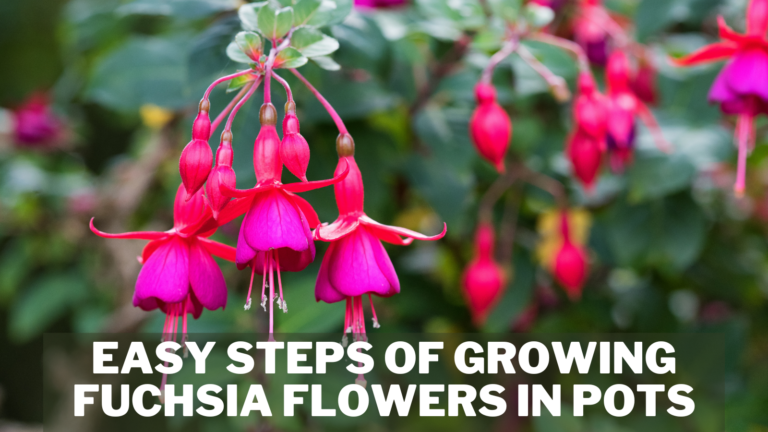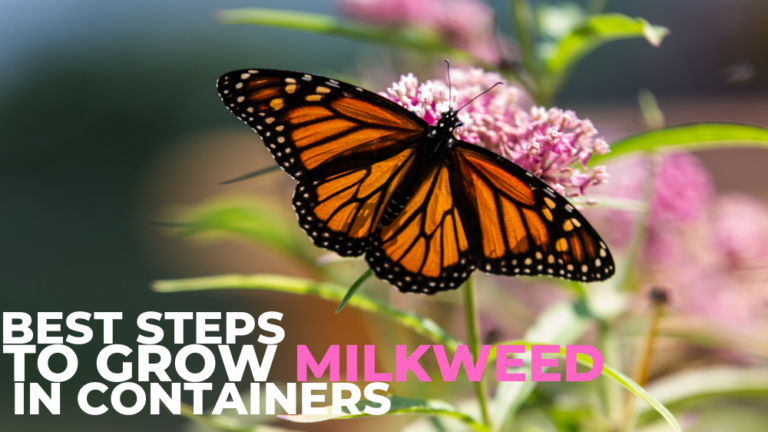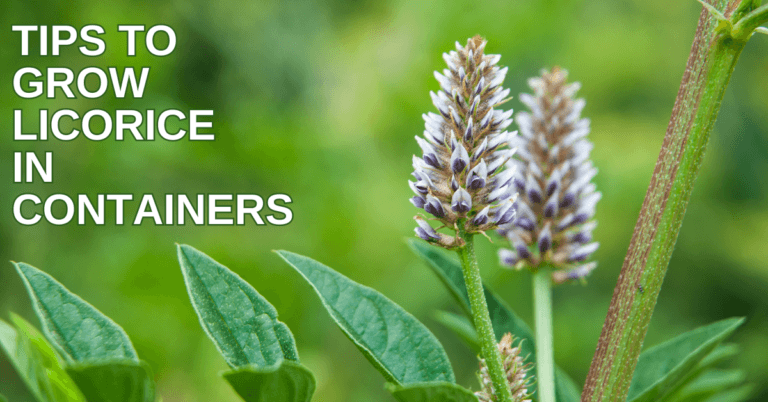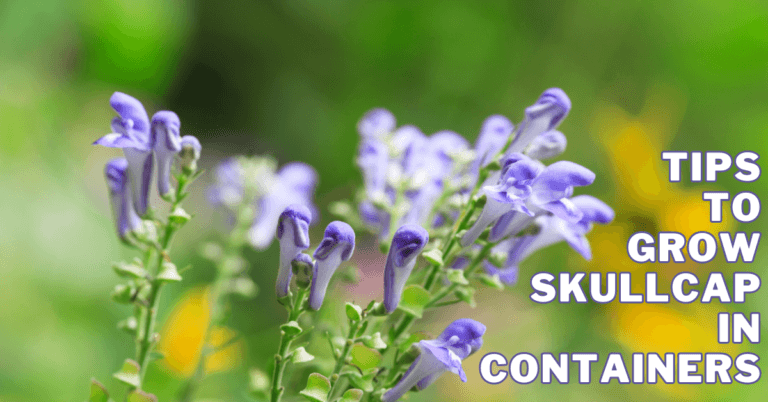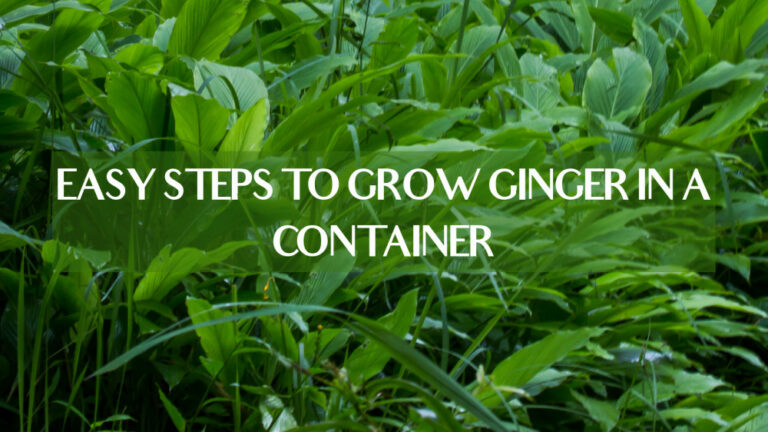9 Easy Steps To Growing Lettuce In Containers
9 Easy Steps To Growing Lettuce In Containers
We have a green thumb but don't have access to a garden. On patios, decks, and balconies, container gardens are a fantastic method for practically everyone, especially city dwellers, to produce a few herbs or greens.
A sunny window will suffice if you don't have access to an outdoor space. Because lettuce has short roots, it thrives in containers and is one of the most straightforward vegetables to grow.
Growth lettuce in pots also allows you to extend the growing season by starting plants indoors in early spring and moving them outside when the weather warms up. Similarly, as the weather cools down in the fall, you may bring your lettuce plants inside to extend the growing season.

Nutrition Facts Of Lettuce
The nutrients in three cups (85 grams) of shredded leaves are as follows:
- Calories: 11
- Fibre: 1 gram
- Protein: 1 gram
- Fat: 0.2 grams
- Vitamin K: 149% of the Daily Value (DV)
- Vitamin A: 127% of the DV
- Magnesium: 3% of the DV
- Manganese: 9% of the DV
- Vitamin B6: 4% of the DV
- Potassium: 5% of the DV
- Riboflavin: 4% of the DV
- Vitamin C: 5% of the DV
- Thiamine: 4% of the DV
- Folate: 8% of the DV
- Iron: 6% of the DV
Health Benefits Of Lettuce
The Egyptians were the first to grow lettuce (Lactuva sativa). It has long been used in Unani medicine to treat several ailments. This antioxidant-rich green leafy vegetable is also abundant in important elements. Salads, sandwiches, soups, and wraps frequently feature it. It has a wide range of health advantages, including the following.
1. Assist Lower Blood Pressure
High blood pressure affects many individuals worldwide, making your heart work harder and perhaps increasing your risk of heart disease or stroke.
Recent research shows that a potassium-rich diet can help decrease blood pressure. Potassium, abundant in red leaf lettuce, appears to lower blood pressure by counteracting the effects of sodium and aiding blood vessel dilation.
Increasing your intake of red-leaf lettuce and other potassium-rich foods like avocados and beans may help you maintain a healthy blood pressure level.

2. Will Help You Lose Weight
Red leaf lettuce has several characteristics that make it a weight-loss-friendly food.
For example, this vegetable is low in calories but high in fiber, which can help you feel satisfied.
It also contains a large amount of water. Diets heavy in low-calorie, high-water meals, such as leafy greens like red leaf lettuce, have been shown in studies to help people lose weight.
Even though no studies have directly linked red leaf lettuce to weight loss, this low-calorie vegetable is likely to help your waistline if consumed as part of a healthy diet.
3. Possibly Beneficial To The Brain
Extreme cases of brain damage can cause neuronal cell death, resulting in serious brain illnesses such as Alzheimer's. According to multiple research, lettuce extracts reduced neuronal cell death as a result of their participation in GSD or glucose/serum deprivation.
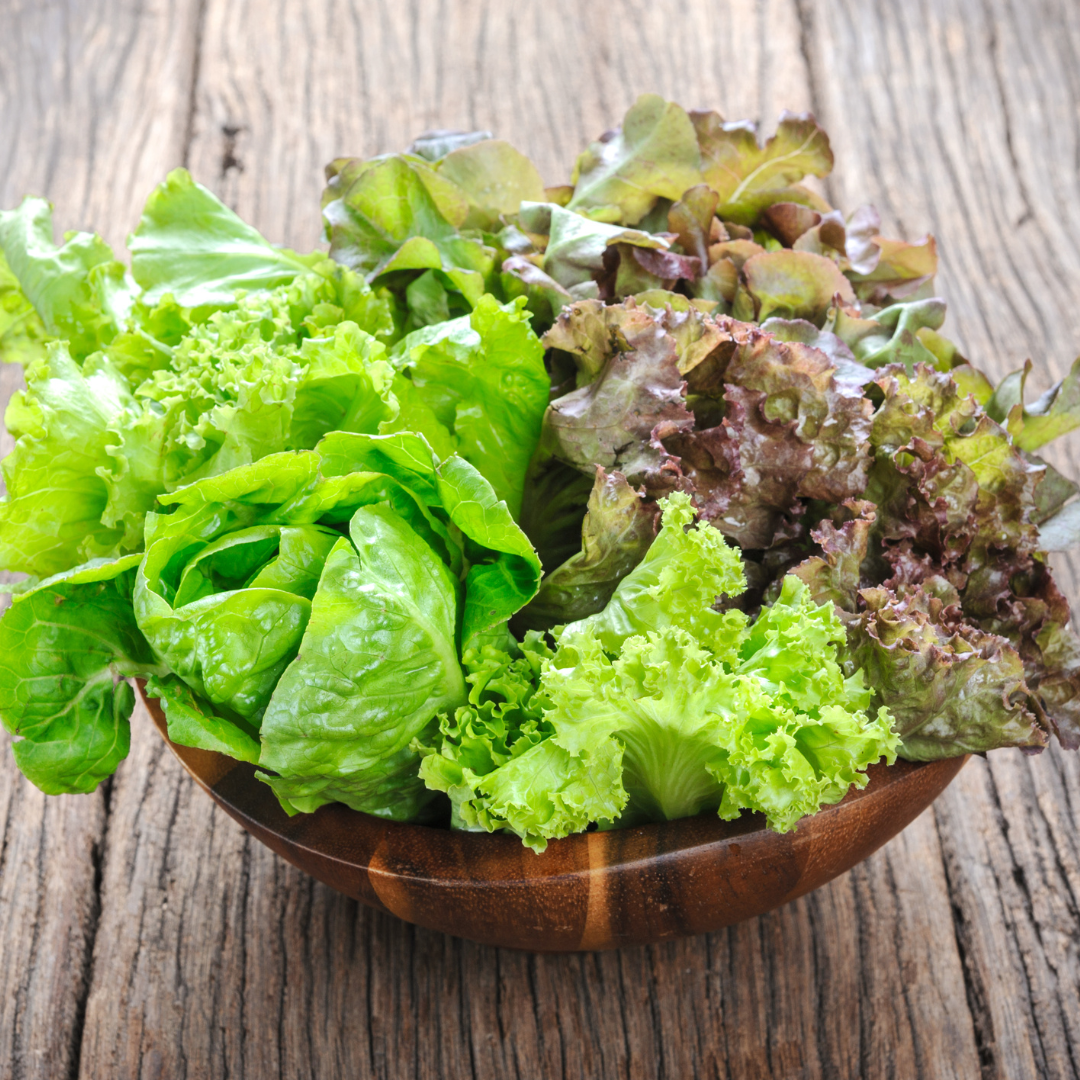
4. Improve Heart Health
Folate, a B vitamin that converts homocysteine to methionine, is abundant in Romaine lettuce. Homocysteine that hasn’t been processed can disrupt blood vessels and cause plaque formation, hurting the heart.
5. Defeat Cancer
Consumption of lettuce has been related to a lower risk of stomach cancer, particularly in areas of Japan where the vegetable is consumed daily.
Lettuce is a vegetable that is not starchy. According to a paper published by the World Cancer Research Fund, non-starchy vegetables can help prevent mouth, throat, esophagus, and stomach malignancies. Another study on smokers with lung cancer was undertaken in Japan. The research suggested that eating lettuce may offer health benefits.
6. Reduce Diabetes Risk
Studies have shown that greens, especially those like lettuce, may reduce the risk of type 2 diabetes. This is due to lettuce's low glycemic index (the influence of a specific food on your blood sugar levels).
In addition, one cup of lettuce has just about 5 calories and 2 grams of carbohydrates.
This fact also makes it a healthy addition to a diabetes-friendly diet. Because it includes vital micronutrients, Romaine lettuce is preferred above other varieties. Greens, particularly lettuce, have been demonstrated in studies to lessen the incidence of type 2 diabetes. This is due to lettuce's low glycemic index (the influence of a specific food on your blood sugar levels).
Note: Nutritional Info From a very Trusted source FoodData Central (U.S. DEPARTMENT OF AGRICULTURE)
PubMed Central (National Institutes of Health)
Lettuce Varieties
Lettuce is divided into five divisions based on the shape of the head or the type of leaf. Each lettuce variety has its own flavour and texture, and producing a variety of lettuce varieties will be a certain method to get people interested in eating a healthy diet. Before starting Growing lettuce in containers, you should know all varieties of lettuce.
1. Summer Crisp Lettuce
Summer Crisp is a big lettuce variety with superb flavour that falls between Crisphead and Looseleaf lettuce varieties. It features thick, crisp outer leaves that can be plucked loosely until the head forms and a sweet, juicy, and somewhat nutty heart.
Jack Ice, Oscarde, Reine des Glaces, Anuenue, Loma, Magenta, Nevada, and Roger are all lettuce varieties for this variety, and they all mature in 55-60 days.
2. Butterhead Lettuce
Butterhead is one of the more delicate kinds, with a creamy to light green interior and a loose, soft, and ruffled green shell. These lettuce varieties can be harvested by removing the entire head or only the outer leaves, and they're easier to grow than Crispheads because they're more tolerant of harsh environments.
Butterhead lettuce variants mature in about 55-75 days, spaced similarly to Crisphead lettuce varieties. They are less likely to bolt and are rarely bitter. These lettuce cultivars are particularly popular in Europe.
They include Blushed Butter Oak, Buttercrunch, Carmona, Divina, Emerald Oak, Flashy Butter Oak, Kweik, Pirat, Sanguine Ameliore, Summer Bib, Tom Thumb, Victoria, and Yugoslavian Red.
3. Crisphead Lettuce
Crisphead lettuce, also known as iceberg lettuce, has a compact head of crisp leaves. It's one of the more difficult lettuce varieties to grow and is a virtual mainstay in the delicious BLT. It's often found in the neighbourhood salad bar and is a virtual staple in the wonderful BLT.
This lettuce species does not like hot summer temperatures or lack of water and will rot from the inside out. Iceberg lettuce can be started from seed and seeded 18-24 inches (45.5-61 cm) apart or started indoors and thinned 12-14 inches (30.5-35.5 cm) apart.
Ballade, Crispino, Ithaca, Legacy, Mission, Salinas, Summertime, and Sun Devil are some iceberg lettuce cultivars that mature in 70-80 days.
4. Romaine Lettuce
With spoon-shaped, tightly folded leaves and robust ribs, Romaine variants are typically 8-10 inches (20.5-25.5 cm) tall and upright growing.
The coloration ranges from medium-green on the outside to greenish-white on the inside, with the outside leaves occasionally being rough while the interior foliage is soft and pleasant.
The word ‘Romaine' derives from the word ‘Roman,' and the word ‘Cos' comes from the Greek island of Kos. Brown Golding, Chaos Mix II black, Chaos Mix II white, Devil's Tongue, Dark Green Romaine, De Morges Braun, Hyper Red Rumple, Little Leprechaun, Mixed Chaos black, Mixed Chaos white, Nova F3, Nova F4 black, Nova F4 white, Paris Island Cos, Valmaine, and Winter Density are just a few of the lettuce varieties that mature in about 70 days.
5. Looseleaf Lettuce
Lettuce types with no head or heart, such as Looseleaf. Harvest these varieties whole or by the leaf as they mature. Beginning in early April, plant at weekly intervals through mid-August. Looseleaf lettuce should be thinned to 4-6 inches (10-15 cm) apart. Looseleaf cultivars are heat resistant and slow to bolt.
The following lettuce varieties are available: Austrian Greenleaf, Bijou, Black Seeded Simpson, Bronze Leaf, Brunia, Cracoviensis, Fine Frilled, Gold Rush, Green Ice, New Red Fire, Oakleaf, Perilla Green, Perilla Red, Merlot, Merveille De Mai, Red Sails, Ruby, Salad Bowl, and Simpson Elite, all of which mature in 40-45 days.
Steps Of Growing Lettuce In Containers
Now I’m sharing the 9 easy steps of growing lettuce in containers. If you follow these steps hope you will succeed at Growing Lettuce In Containers. Let’s get started.
Step 1: Select The Right Pots
The finest containers are plastic pots or huge garden bags. They don't have to be too deep, but a larger surface area enables for more lettuce plants to be grown. Clay pots should not be used in the summer because the soil is prone to drying out. To avoid waterlogging the plants, all containers must have appropriate drainage.
Step 2: Soil
Because lettuce is 95 percent water, it necessitates near-constant wetness to avoid wilting. It does not, however, farewell in standing water.
Fill your pot with high-quality potting soil to achieve this damp but not soggy balance. This unique soil retains moisture better than regular dirt, enabling excess water to drain quickly.
Fill your pots halfway with potting soil, then saturate the soil with water. Setting the pot in a dish or large tray and letting it sit in water for a few hours may assist. Before planting, this will assist the soil in absorbing as much moisture as possible.
Step 3: Sow Seeds At Perfect Weather
Sow Your Seeds When It's Cool Outside. The best way to cultivate most greens and lettuce is to seed them straight into the pot where they will be grown.
Prepare your pots inside near a sunny window a few weeks before the last hard frost in spring or a few weeks before the temperatures drop in late summer to extend your growing season.
Simply sprinkle the seeds over moist soil, then gently mix the dirt to cover them if you intend to harvest your greens as “baby” leaves. In this instance, there is no need to thin. As needed, harvest the immature leaves. If you're going to pick mature heads, put a little divot every few inches around 14 inches deep.
Fill each hole with a pinch of seeds and cover carefully. Thin the sprouts as they grow, following the package guidelines. Because lettuce seeds and many other greens seeds require light to grow, don't sow them too deeply.
You can move the pot outside once the sprouts are a couple of inches tall and the threat of hard cold or excessive heat has passed.
Step 4: Choose A Perfect Location
The majority of lettuce types, as well as the majority of greens, are cool-season plants. This means they flourish in temperatures below 70 degrees Fahrenheit.
This isn't to say they don't enjoy the sun. Six hours of sunlight each day for most varieties is plenty, but more will help your plants mature faster.
When planning your early spring garden, choose a location with plenty of southern exposure. As the season progresses, you can relocate your pots to a location that receives more morning light while avoiding the scorching heat of the afternoon.
Step 5: Watering
You may need to water the plant frequently in shallow containers to keep it from drying out altogether. Make sure not just to maintain the soil somewhat damp but also to avoid overwatering your container-grown lettuces since this can cause root rot, which can destroy the plants.
Step 6: Fertilizer
When the seedlings are 3-5 inches tall, use a balanced fertilizer like 10-10-10. For a rapid boost, liquid fertilizer can be used. It's also a good idea to amend the soil with vegetable or fruit waste to keep the plants healthy.
Use the balanced feed once every 3-4 weeks once the plants are well established, as directed on the label.
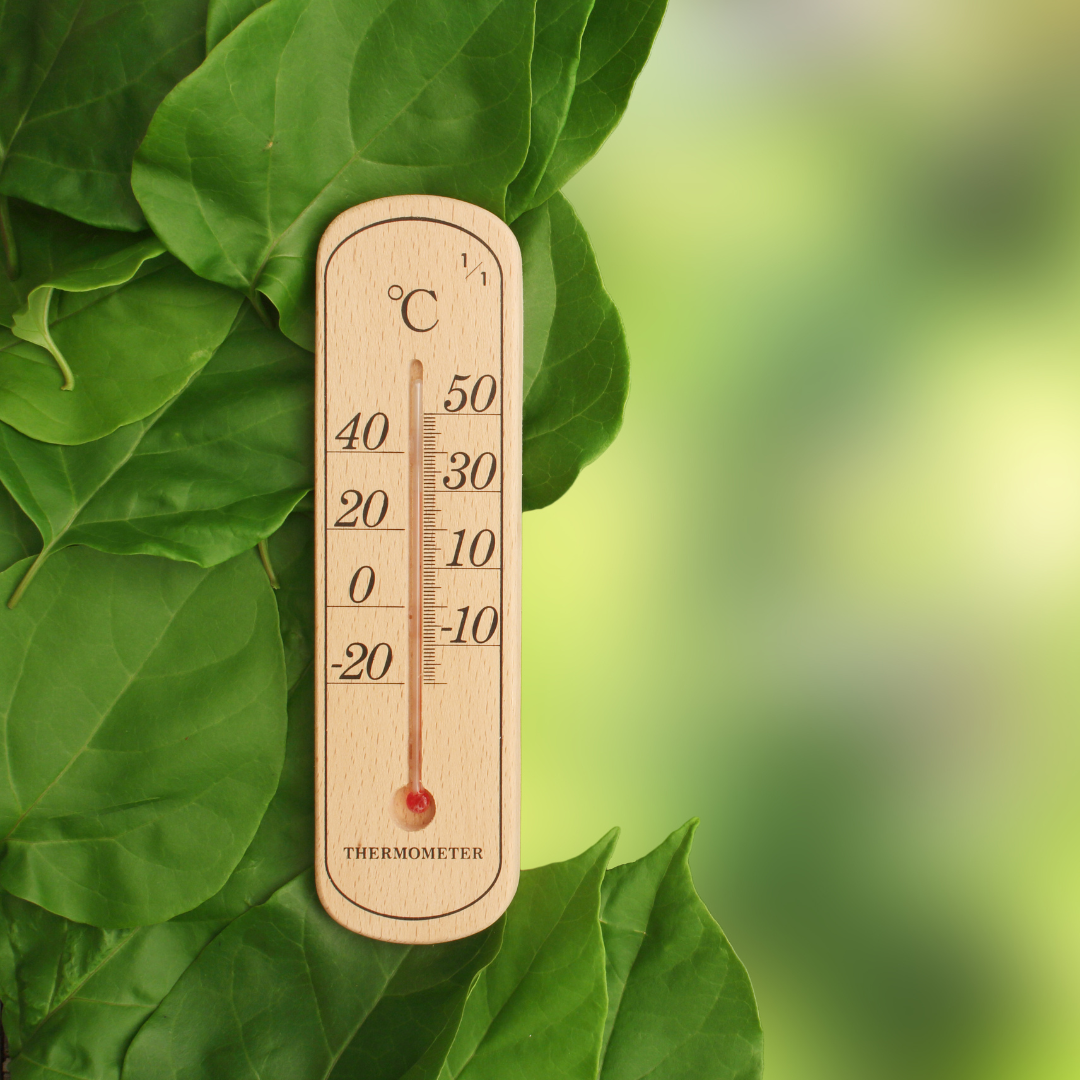
Step 7: Temperature
Keep an eye out for frost warnings when harvesting in the fall. The majority of lettuces and greens are hardy and can endure light frosts. However, it's preferable to bring the pots indoors in colder weather or harvest everything and start over in the spring.
You'll want to keep an eye out for signs of bolting when it comes to spring crops.
These plants will switch from generating leaves to producing blooms when the weather warms and the number of daylight increases. The central stalk will begin to elongate as a result of this. The leaves become bitter and usable once the flower stem has formed.
The only way to avoid losing your crop once bolting occurs is to harvest completely. However, you may prevent bolting by shifting your pots to a cooler place or erecting a shade sail to reduce afternoon temperatures. These precautions will allow you to extend your season by a few weeks.
Step 8: Harvesting
- The leaf lettuce can be harvested approximately twenty-five days after sowing.
- If you prefer smaller leaves, start earlier.
- Always select from the plant's outer edge to encourage the lettuce to produce additional leaves.
- I only choose what I will use that day so you can enjoy your lettuce while it's still fresh.
- After sowing, the leaf lettuce types will grow for around five to six weeks.
- Once they've reached maturity, cut the entire plant with a knife.
- With one hand, gather the leaves and cut them at the bottom, leaving the roots in the soil.
- The plants mature for all heart lettuce kinds in about six to seven weeks.
- You can choose some.
- While it's maturing, you can also pick some of the outer leaves.
- Using a sharp knife, cut the head of lettuce at the base of the plant.
- You won't disrupt the other plants in the container this way.
- You can remove the remaining roots when all the lettuce and other veggies have been gathered.
Step 9: Storing
Wash your lettuce in cool water after picking it, and shake off the excess water. Use it right away, or keep it refrigerated in a plastic bag.
Wrapping the leaves with a moist cloth or paper towel will help them last longer and keep them fresher in the fridge. Make sure it doesn't become too moist, or the leaves may decay. When kept refrigerated, lettuce usually lasts approximately a week.
Problems You Might Run Into
Lettuce and greens are relatively simple to grow, although various diseases and problems can harm them. You have to be aware at the time of Growing lettuce in containers. Here are some common issues you may encounter when cultivating these leafy plants in pots.
1. Leaves That Are Stunted Or Curl Towards The Edges
This is a common indication that your plant is infested with aphids. These tiny, squishy beetles eat on the bottom and stem of greens and may go undetected until you look hard enough. Spraying leaves with soapy water can assist in the removal and killing of bugs.
2. Germination Failure
Most of the time, this happens because the seeds are buried too deeply. Make sure that only a thin layer of earth covers the seeds. Too warm soil can also prevent lettuce seedlings from germinating.
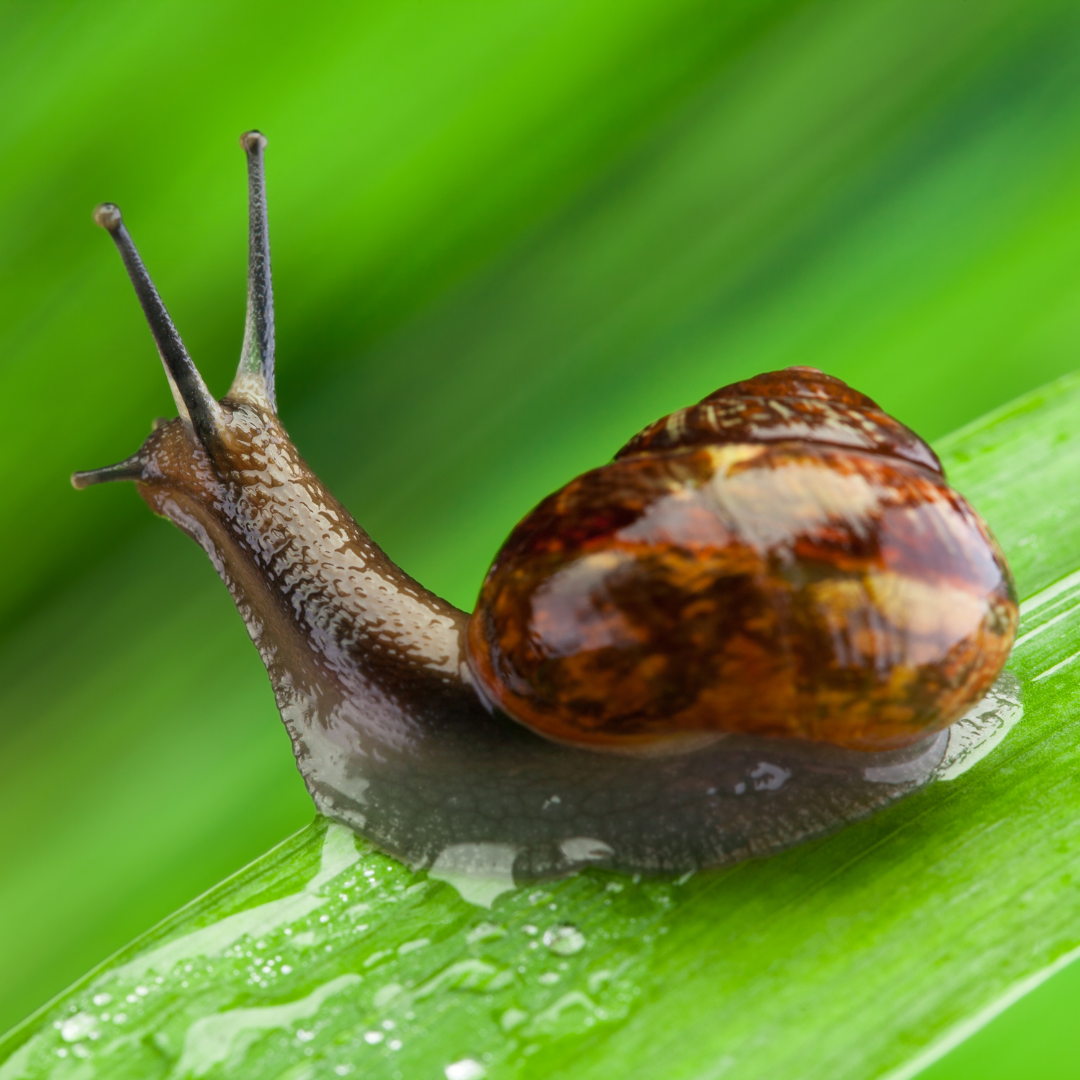
3. Slugs And Snails
Greens are a favorite food of these slimy bugs. Container plants, on the other hand, are less of a concern because they are more difficult to get. If you come across them, try mulching your greens with red cedar bark to deter them, or fill a tiny jar with beer and place it in the pot to attract and kill them.
4. Leaves With Little Circular Holes
Many bugs can cause this problem, but the flea beetle is one of the most common culprits. Arugula and other thick-leaved greens are favourites of these little black, glossy hopping bugs. These pests can be repelled by sprinkling talcum powder on afflicted plants.
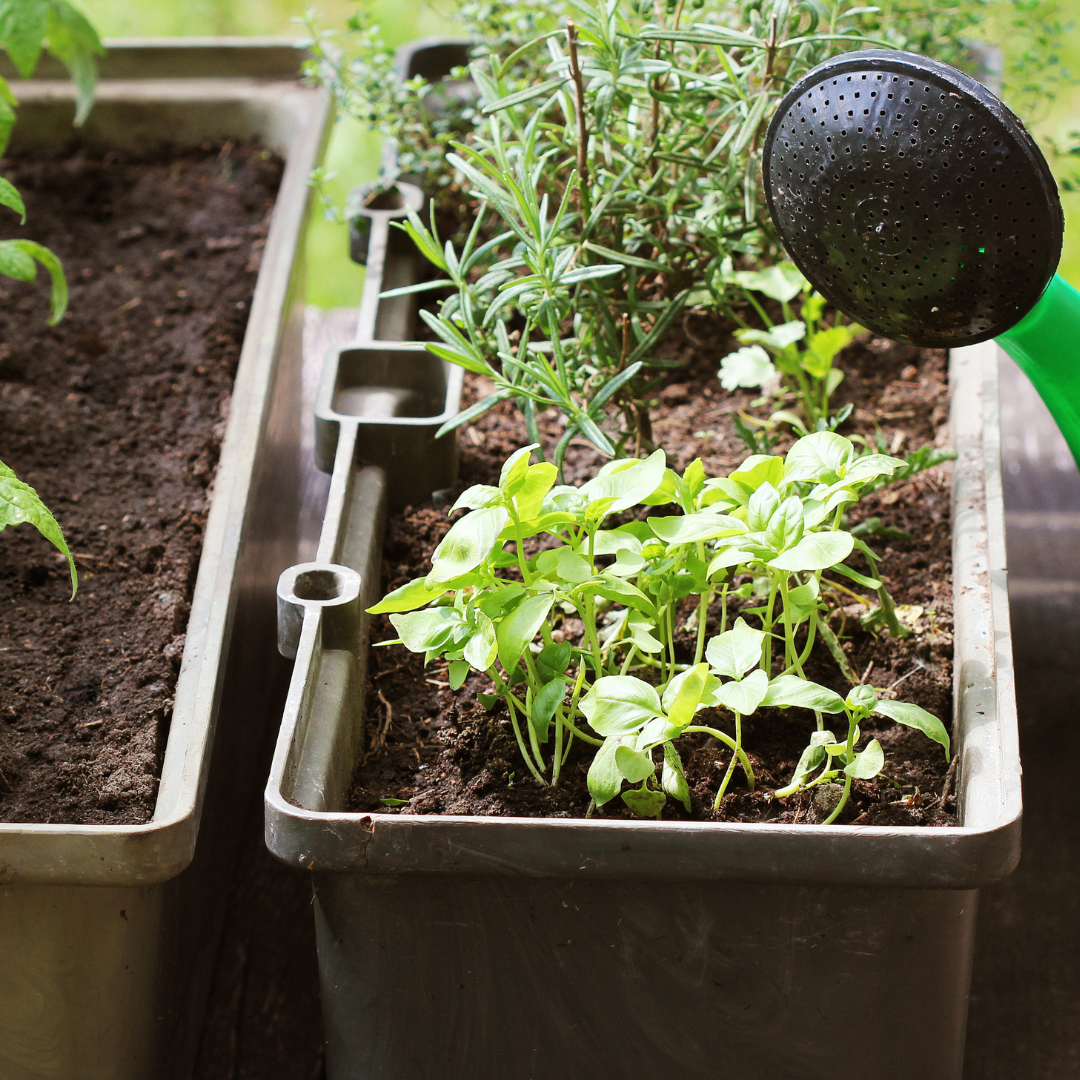
Conclusion
Growing lettuce in pots is a terrific method to get your hands on this popular salad ingredient. It's not only ideal for container gardens or gardeners with limited areas, but it's also advantageous for gardeners in harsh climates. I hope these easy ways will help you for growing lettuce in containers.
Growing lettuce in containers allows you to provide shade to plants during hot weather, which helps to prevent bolting. Growing lettuce in a pot undercover will allow you to enjoy this product during the fall and winter months.
Plant lettuce around other vegetables, such as cucumbers, to make the most of your container space. You'll enjoy a fresh supply of greens for months with a little care and the appropriate container layout.
I trust you enjoyed this article on the 9 Easy Steps To Growing Lettuce In Containers. Please stay tuned for more blog posts to come shortly. Take care!
JeannetteZ
>>>Please click here to read my all-inclusive article about Container Gardening<<<
Are you interested in homegrown herbs and medicine? Please click here to find out more about it!
Your Opinion Is Important To Me
Thoughts? Ideas? Questions? I would love to hear from you. Please leave me your questions, experience, and remarks about this article on the 9 Steps To Growing Lettuce In Containers, in the comments section below. You can also reach me by email at Jeannette@Close-To-Nature.org.
You might also enjoy these blog posts:
How To Grow Carrots In Containers
Top Reasons Why You Need A Dog In Your Life
9 Secret Techniques To Growing A Cherry Tree In Container
9 Steps To Growing Cantaloupe In Containers
Simple Ways To Grow Mulberries In Pots















